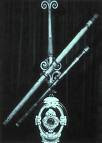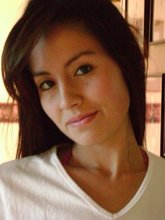In the history of the man, the creative capacity has been present in the development of the civilization. One of the characteristics that differentiate to the man like being rational or like " homo sapiens" of the other beings of the creation, it is his capacity of creatión, to invent and to obtain great inventions for the well-being of the human race. nevertheless the life and builds of these great inventors has been noticeable of sacrifices and sufferings that mark rule in the development of models that managed to change the reality of the human being, laying way to the TECHNOLOGICAL WORLD.
rational or like " homo sapiens" of the other beings of the creation, it is his capacity of creatión, to invent and to obtain great inventions for the well-being of the human race. nevertheless the life and builds of these great inventors has been noticeable of sacrifices and sufferings that mark rule in the development of models that managed to change the reality of the human being, laying way to the TECHNOLOGICAL WORLD.
HANS LIPPERHEY A ND THE TELESCOPE
ND THE TELESCOPE
Hans Lipperhey was born in Wesel (western Germany) and settled in Middelburg, the capital of Zeeland, the southwesternmost province of the Netherlands, where he married in 1594 and became a citizen in 1602. His craft was that of spectacle-maker. Middelburg was a flourishing city, especially after the fall of Antwerp to the Spanish in 1585, which caused many of its Protestant inhabitants to flee north to the Netherlands.
Minute of Lipperhey's patent application
New glass-making techniques were introduced here by Italians in the 1590s, and perhaps some ideas about combining lenses were abroad in this glass-making community. Although others have claimed the invention of the telescope and the device was impossible to keep secret, the earliest record of the existence of such a device is a letter of the government of Zeeland to its delegation to the States General of the Netherlands, dated 25 September 1608, which instructs them to be of help to the bearer, "who claims to have a certain device by means of which all things at a very great distance can be seen as if they were nearby, by looking through glasses which he claims to be a new invention.
On 2 October the States General discussed Lipperhey's application for a patent on the instrument. Although the patent was eventually denied because it was felt that the device could not be kept a secret, Lipperhey made several binocular telescopes for the States General and was paid handsomely for his services.
Shortly after that, the States General were also petitioned by Jacob Metius of Alkmaar, a city in the north of the Netherlands, who also claimed to be the inventor. The claim of yet a third person, Sacharias Janssen, also a spectacle-maker in Middelburg, emerged several decades later. The surviving records are not sufficient to decide who was the actual (or as it was put in the seventeenth century, the first) inventor of the telescope. All we can say is that Lipperhey's patent application is the earliest record of an actually existing telescope.
SAMUEL FINLEY BREESE MORSE AND THE TELEGRAPH

Samuel Finley Breese Morse was born in Charlestown, Massachusetts, on April 27, 1791. He was the first son of Jedidiah Morse, a clergyman, and Elizabeth Breese, of New Jersey. "Finley," as his parents called him, was the son quickest to change moods while his other two brothers, Sidney and Richard, were less temperamental. His brothers helped him out many times in his adult years.
The Morses' commitment to education had Samuel in Phillips Academy by the age of seven. Though not a star student, his drawing skills were good. Both his teachers' and his parents' encouragement led to Samuel's success with miniature portraits on ivory. Samuel graduated from Yale College in 1810. He wished to pursue a career in art, but his father was opposed to this. Samuel took a job as a clerk in a Charlestown bookstore. During this time he continued to paint. His father reversed his decision and in 1811 allowed Morse to travel to England to pursue art. During this time, Morse worked at the Royal Academy with the respected American artist Benjamin West (1738–1820).
In 1815 Morse returned to America and set up a studio in Boston, Massachusetts. He soon discovered that his large canvases attracted attention but not sales. In those days Americans looked to painters primarily for portraits, and Morse found that even these sales were difficult to get. He traveled extensively in search of work, finally settling in New York City in 1823. Perhaps his two best-known canvases are his portraits of the Marquis de Lafayette (1757–1834; a French general who served with George Washington [1732–1799] during the American Revolution), which he painted in Washington, D.C., in 1825.
In 1826 Morse helped found, and became the first president of, the National Academy of Design, an organization that was intended to help secure sales for artists and to raise the taste of the public. The previous year Morse's wife had died; in 1826 his father died. The death of his mother in 1828 dealt another severe blow, and the following year Morse left for Europe to recover.
ELECTROMAGNETISM
In October 1832 Morse returned to the United States. On the voyage he met Charles Thomas Jackson, an eccentric doctor and inventor, with whom he discussed electromagnetism. Jackson assured Morse that an electric impulse could be carried along even a very long wire. Morse later recalled that he reacted to this news with the thought that "if this be so, and the presence of electricity can be made visible in any desired part of the circuit.
Even as an art professor at the University of the City of New York, the telegraph was never far from Morse's mind. He had long been interested in gadgetry and had even taken out a patent (document protecting the owner of an invention from having it stolen). He had also attended public lectures on electricity. His shipboard sketches of 1832 had clearly laid out the three major parts of the telegraph: a sender, which opened and closed an electric circuit; a receiver, which used an electromagnet to record the signal; and a code, which translated the signal into letters and numbers. By January 1836 he had a working model of the device that he showed to a friend, who advised him of recent developments in the field of electromagnetism—especially the work of the American physicist (scientist of matter and energy) Joseph Henry (1797–1878). As a result, Morse was able to greatly improve the efficiency of his device.
INVENTION TRIAL
In September 1837 Morse formed a partnership with Alfred Vail, who contributed both money and mechanical skill. They applied for a patent. The American patent remained in doubt until 1843, when Congress approved thirty thousand dollars to finance the building of an experimental telegraph line between the national capital and Baltimore, Maryland. It was over this line, on May 24, 1844, that Morse tapped out his famous message, "What hath God wrought [made]!"
Morse was willing to sell all of his rights to the invention to the federal government for one hundred thousand dollars, but a combination of a lack of congressional interest and the presence of private greed frustrated the plan. Instead he turned his business affairs over to Amos Kendall. Morse then settled down to a life of wealth and fame. He was generous in his charitable gifts and was one of the founders of Vassar College in 1861. His last years were spoiled, however, by questions as to how much he had been helped by others, especially Joseph Henry.
 , although their similitaries, there will also be noteworthy differences.
, although their similitaries, there will also be noteworthy differences. In addition, while the American was accustomed to that new form of life in community, its creativity was developed very quickly, although, your personality changed with the time. Your bad mood was highly every time. In contrast with LIPPERHEY was quiet and radical but conservative.
In addition, while the American was accustomed to that new form of life in community, its creativity was developed very quickly, although, your personality changed with the time. Your bad mood was highly every time. In contrast with LIPPERHEY was quiet and radical but conservative.